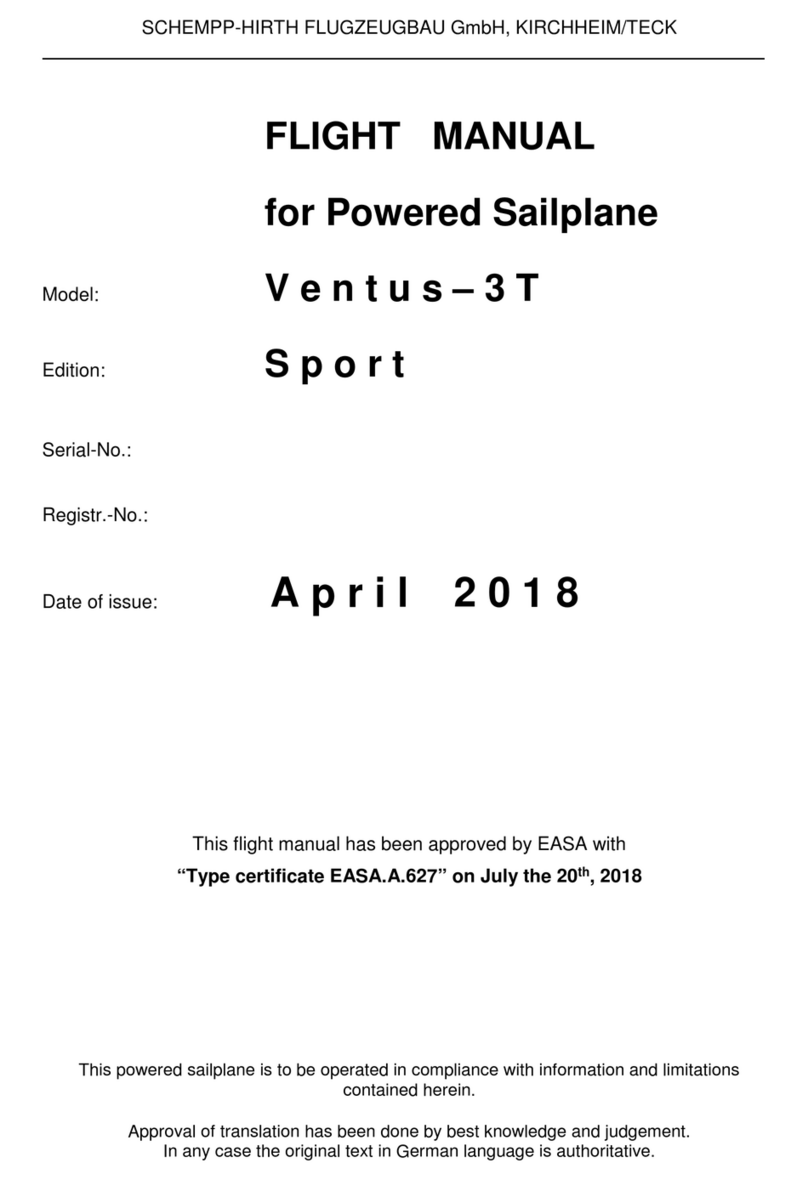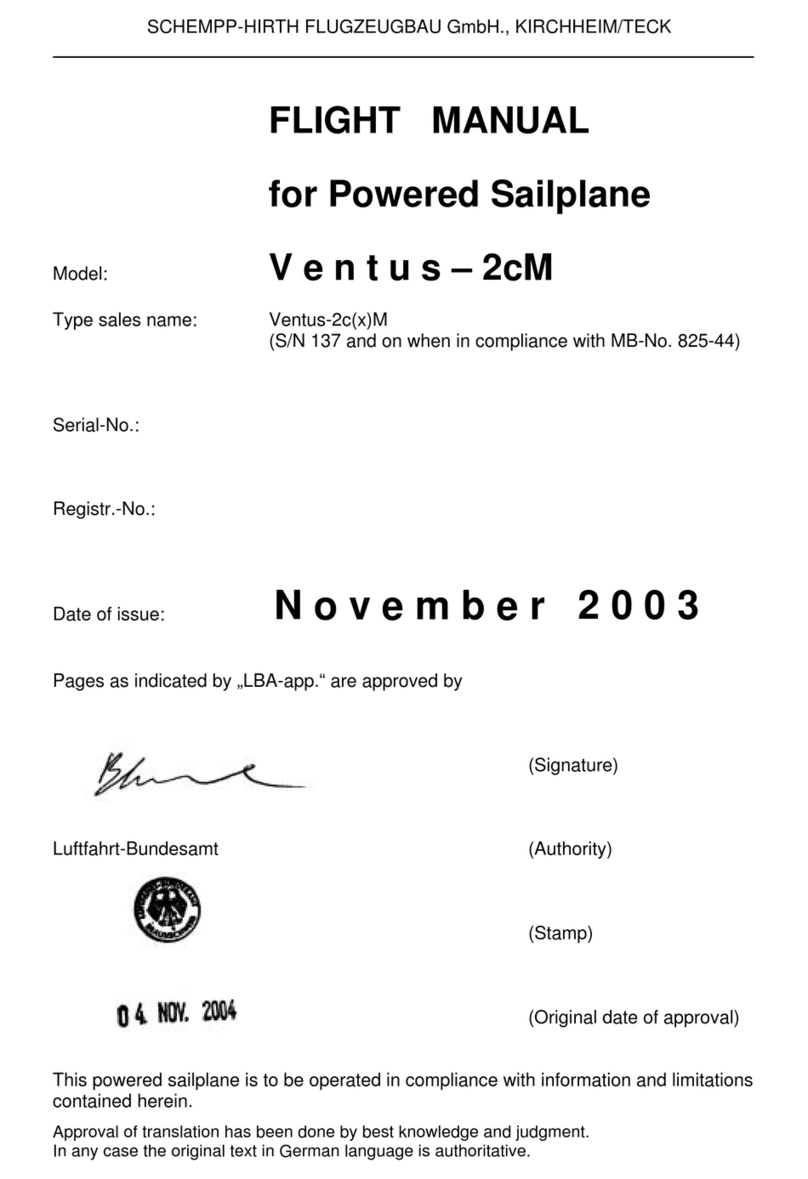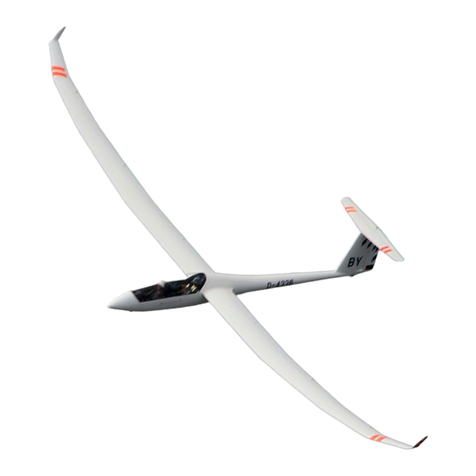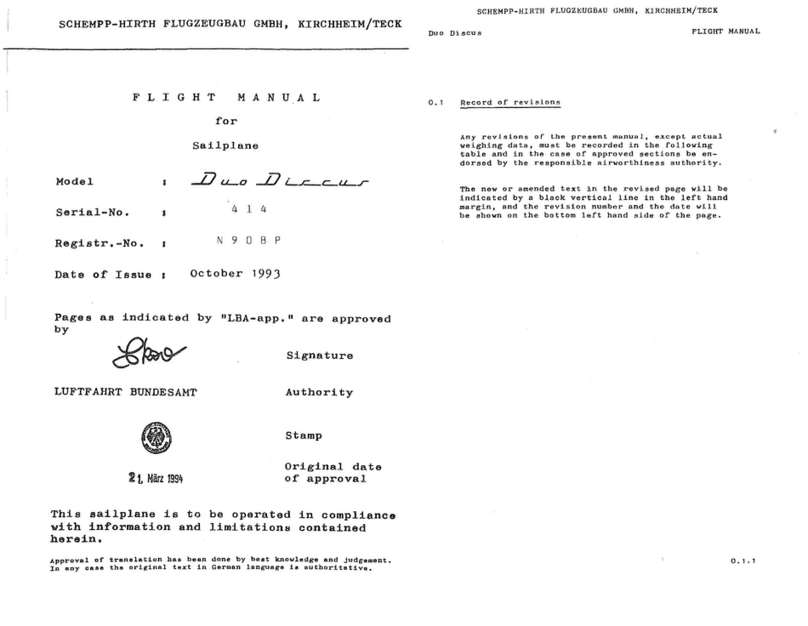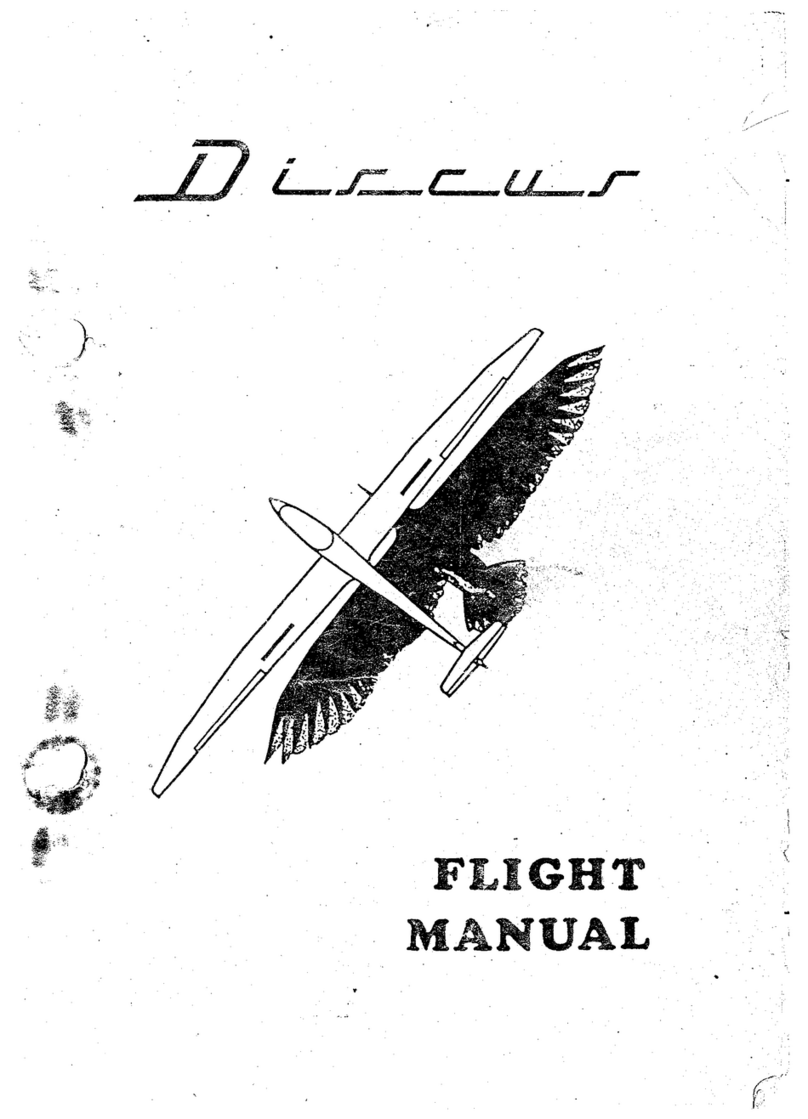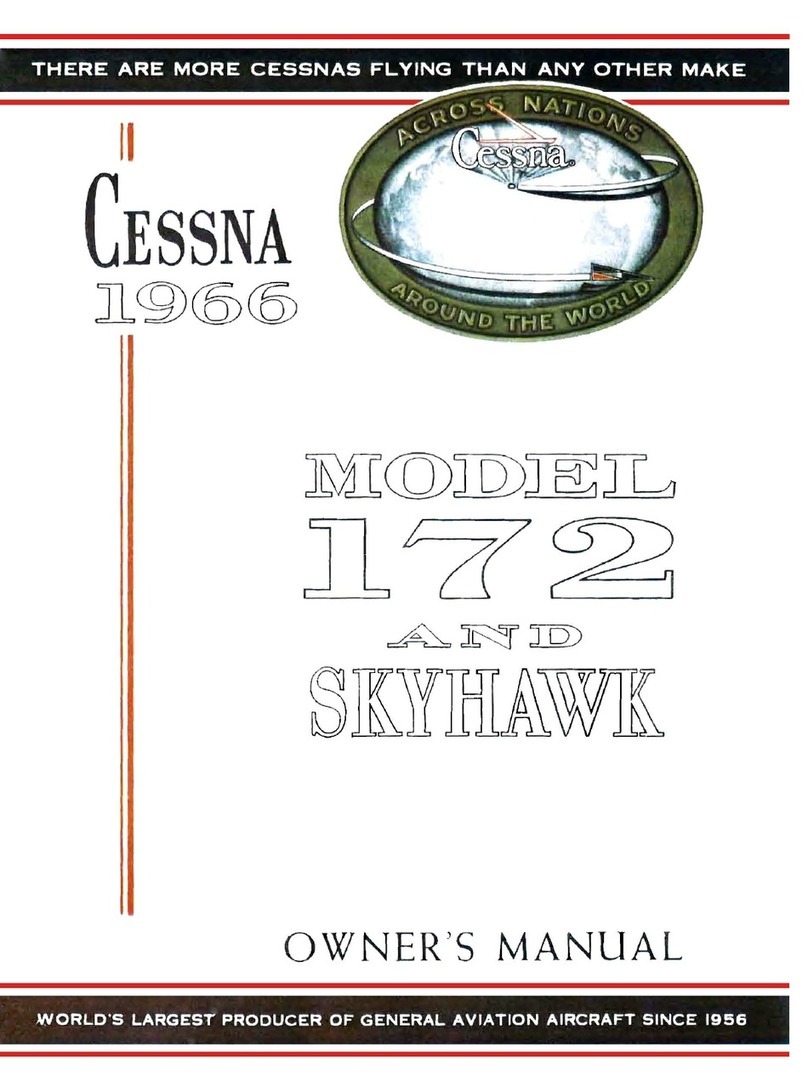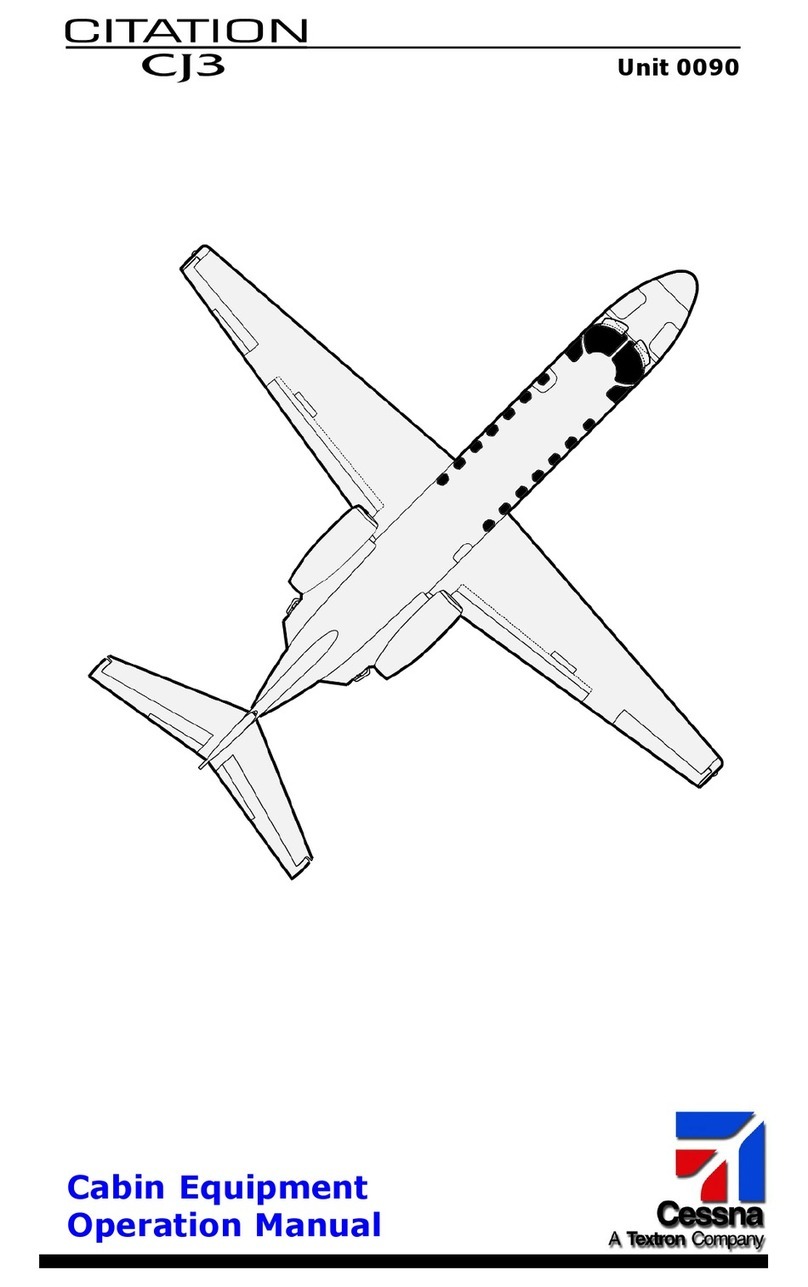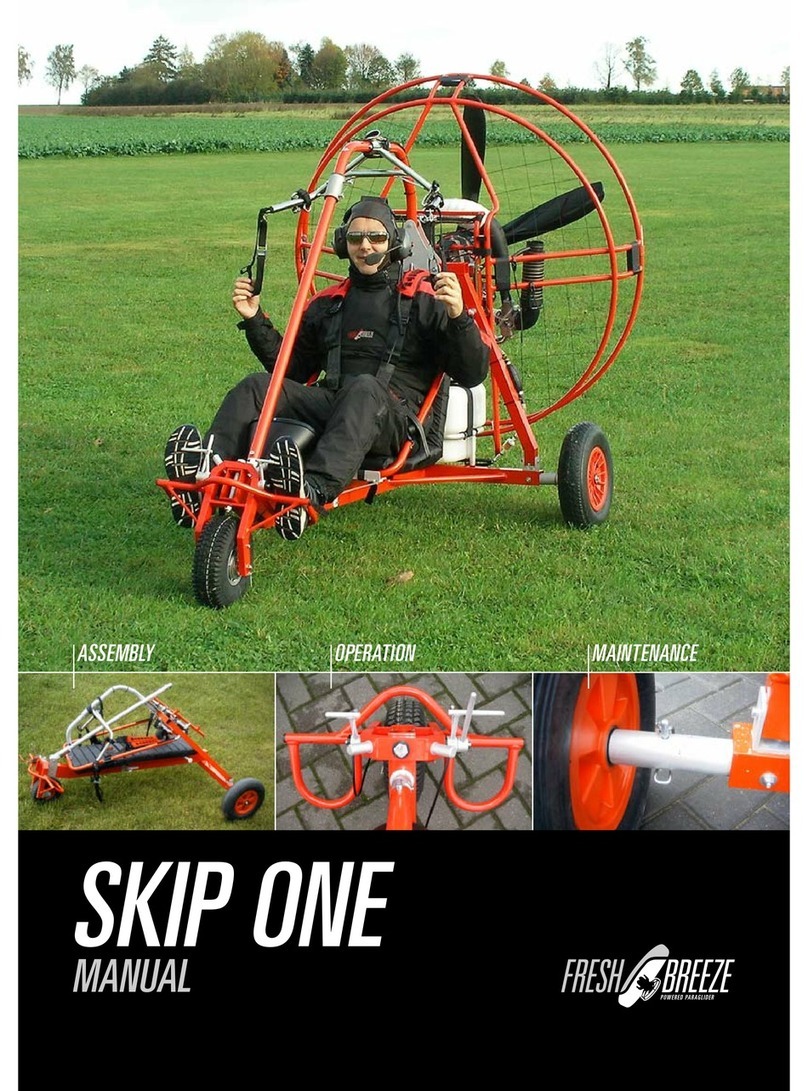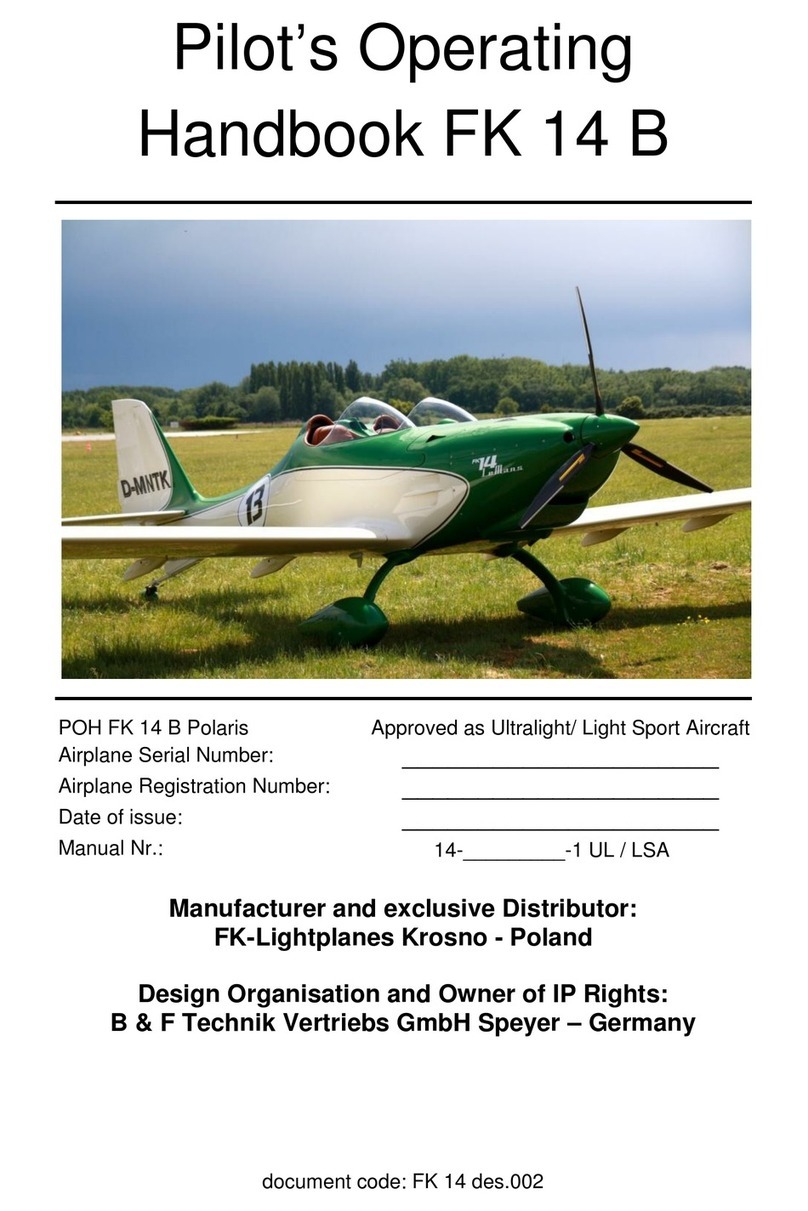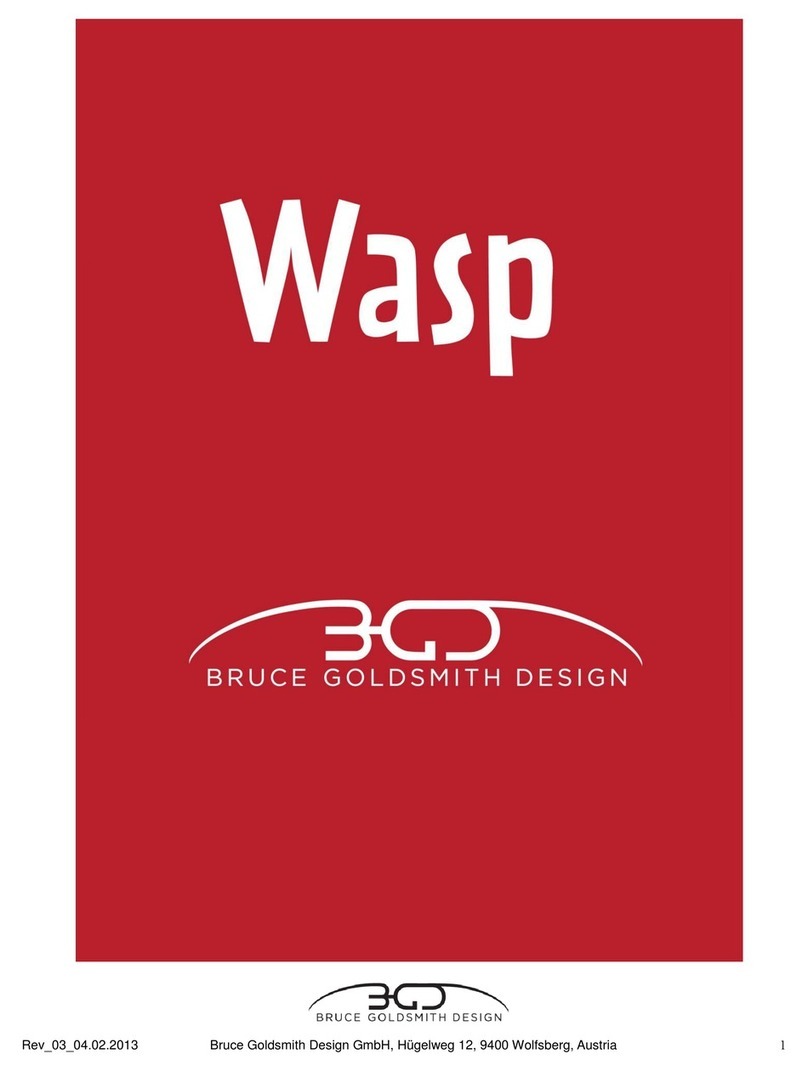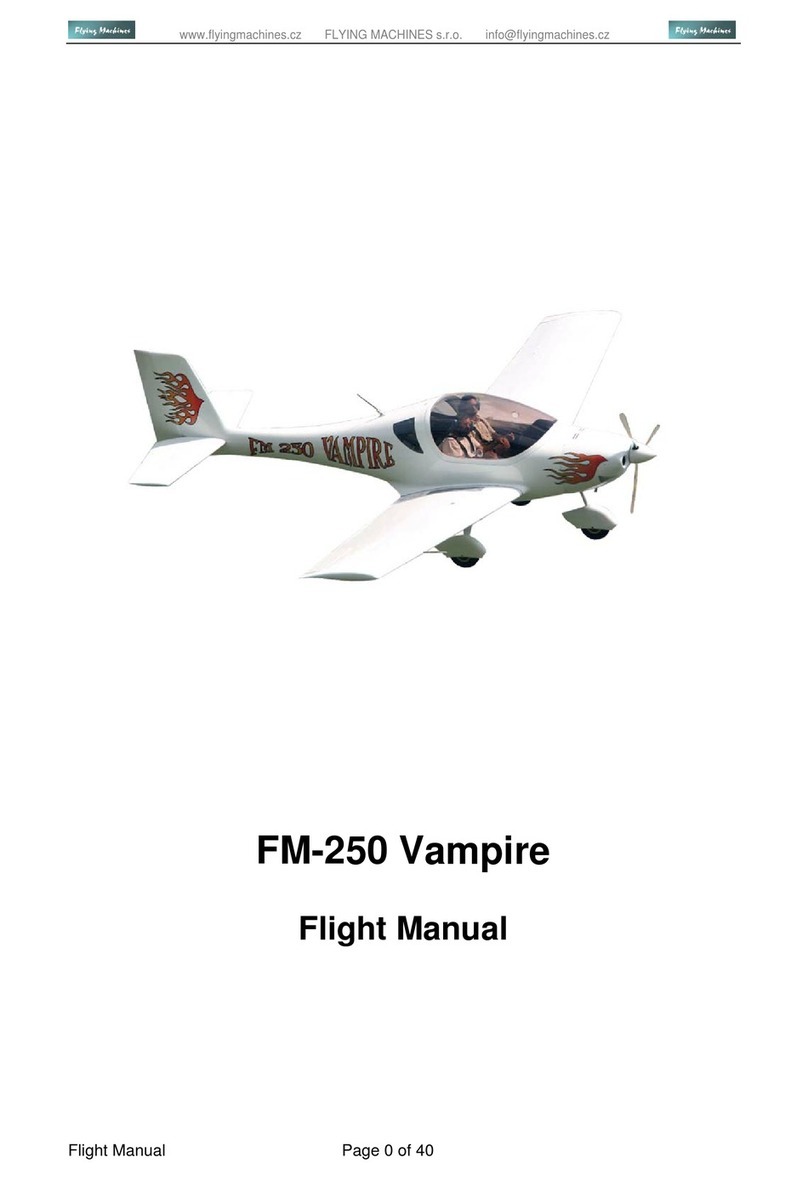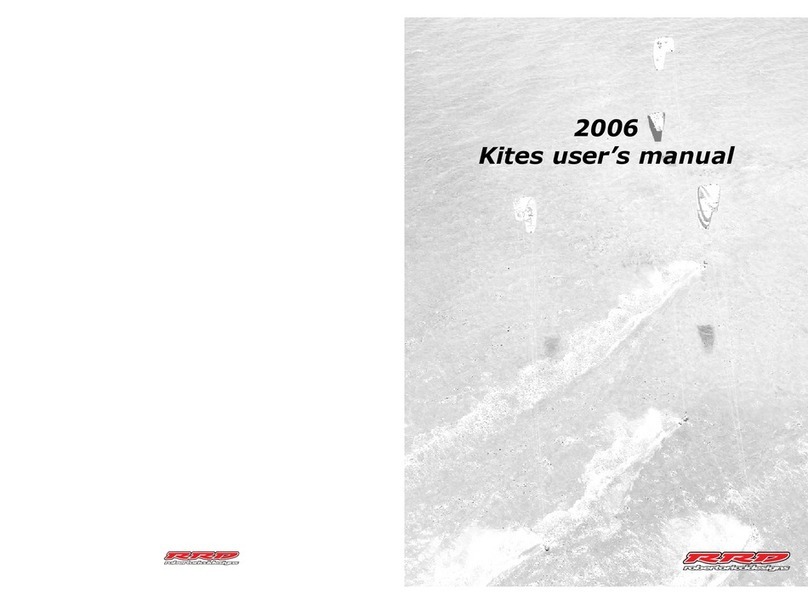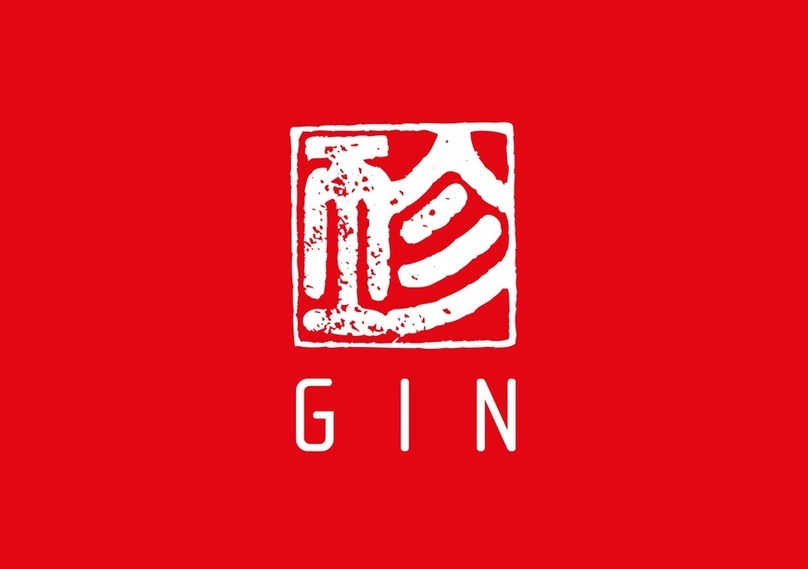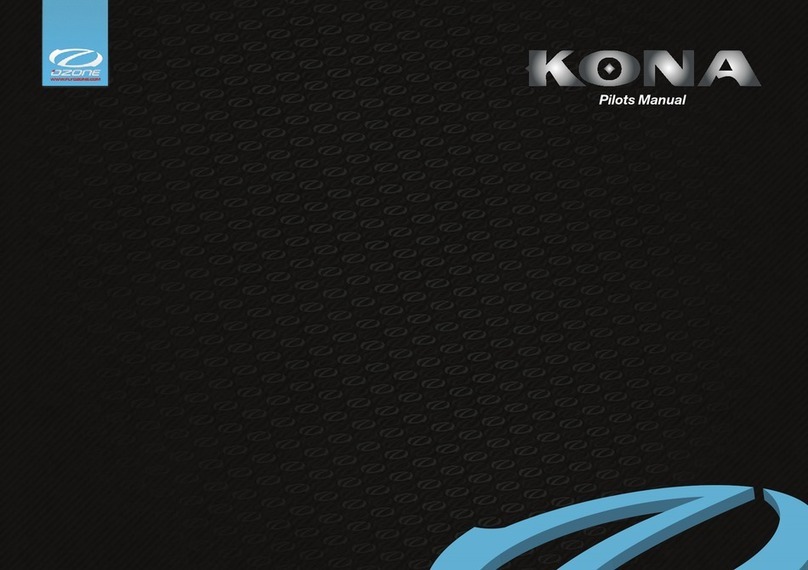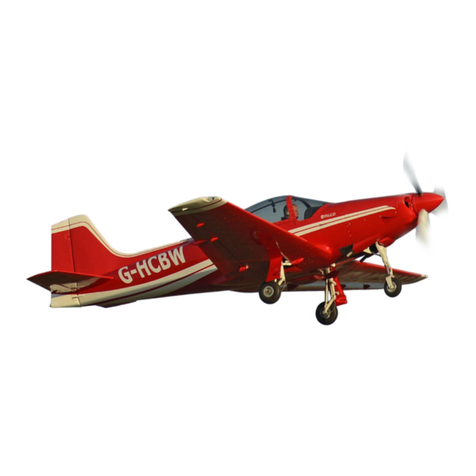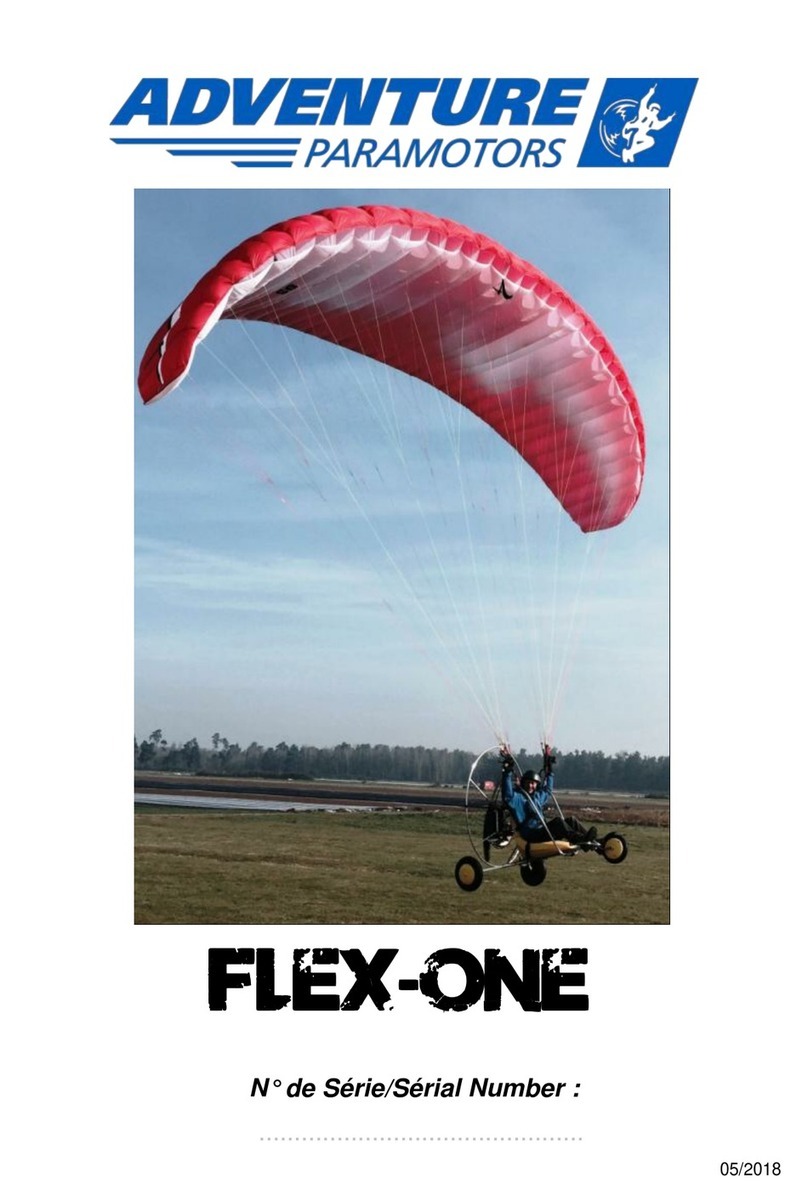
[-rr"""= "" -- - , - Fr,rcrrr "*"* |I oiscus cs - B - F"r"r* n*r**.l
(Cockpit Design and Controls,ctd. )
(5) Launchind hook release handle
Yelloh, T-shaped handle on the left at the base of
the instrument panel console.
The winch cable (tow rope) is released by pulting
the handle.
(5) Landinq crear operatinq lever
Retract : Unlock the black handle on the right at
the seat pan support, pulI back and
engage i-n rear recess.
Extend ! Unlock black handle, push forward and
engage in rear recess.
(7) Canopy
The one-piece plexiglass canopy hinges sideways on flush
fittings. fake care that the cable restraining the open
canopy is attached.
(8) Canopy lockino device
Lever control with red knob on the 1eft on the
canopy frame"
Backnard position .... canopy locked
To open the canopy swing lever forward and raise
canopy.
(9) Canopv emerqencv iettisonincr device
Sliding red knob on the right on the canopy frame.
Backlrard position .... locked
To jettison the canopy, first swing the locking
lever on the left on the canopy frarne forward, raise
canopy.push the red jettison knob on the right on
the inner skj-n forward and push canopy away.
June 1990
(Cockpit Design and Control-s, ctd.)
(10) Winq and fin tank water ballast dumpinq device
Black ba1l-shaped knob on the right in the
middfe of the GFRP inner skin.
Forward position : Valves closed
Backward position = Valves open
To lock the valves open, push knob downwards
into recess.
(11) Airbrake lever
Blue Iever on the left hand side of the
cockpit.
Lever projects downwards,
Forward position
Pulled back approx.
40 rur (1.6 in. )
Pulled fully back
= airbrakes closed
and locked
= unlocked
= airbrakes fully
extended
(12) Elevator trin
Green knob on the 1eft at the seat mol"d
support.
The spring operated elevator trim is
gradually adjusted by rnoving the green
knob inwards, sliding it info the desired
position and releasinq it to lo;k.
Forward position
Backward position = nose heavy
: tail heavlr
,June 199o




















